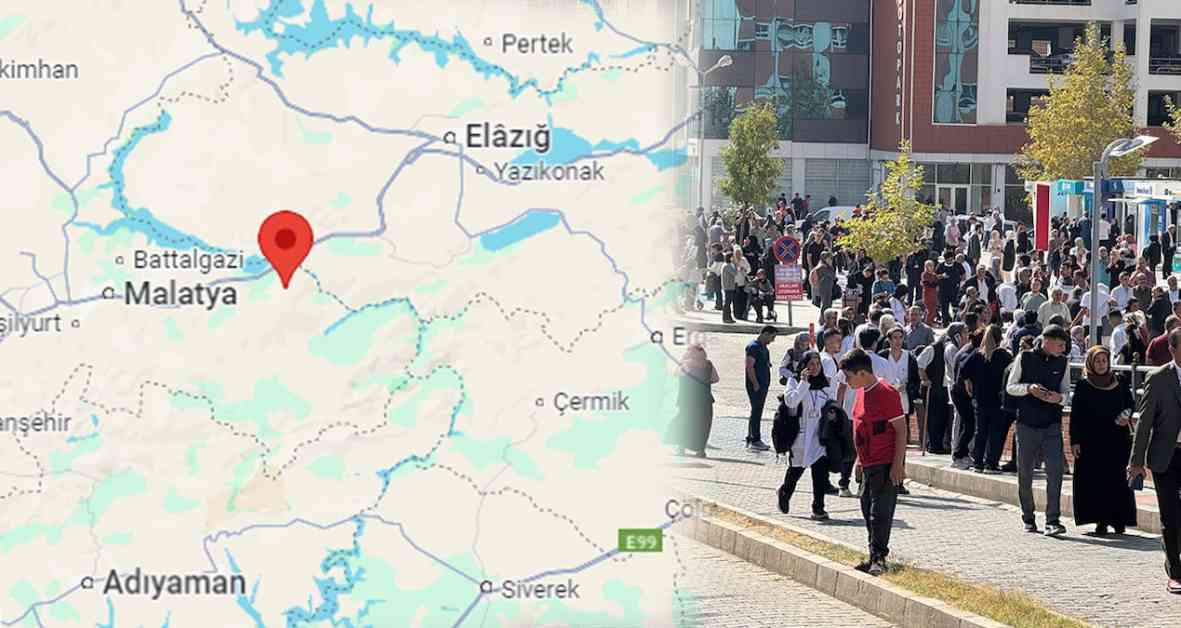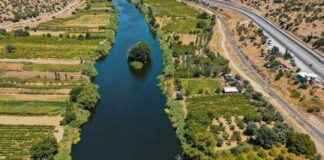On the morning of October 16, 2024, Malatya was struck by a significant earthquake with a magnitude of 5.9, originating in the Kale district. The tremors were felt not only in Malatya but also in neighboring provinces such as Elazığ, Diyarbakır, Şanlıurfa, Gaziantep, Erzincan, Adıyaman, Kahramanmaraş, Batman, Tunceli, and Kayseri. The earthquake, which occurred at 10:46 am local time, was reported by the Disaster and Emergency Management Authority (AFAD) and caused widespread panic among residents.
AFAD’s announcement stated that the earthquake had a depth of 10.07 kilometers, with the epicenter located in Malatya’s Kale district. Following the initial tremor, a total of 77 aftershocks ranging from 1.2 to 3 in magnitude were recorded. The aftershocks added to the anxiety of the residents, prompting many to evacuate their homes and seek safety in the streets.
Government officials, including Interior Minister Ali Yerlikaya, swiftly responded to the crisis by initiating search and rescue operations. Minister Yerlikaya assured the public that no casualties had been reported so far, with 187 individuals affected by the earthquake. He further mentioned that 43 individuals were under observation, but no fatalities had been recorded. The quick response from emergency services helped prevent any loss of life, but the impact on buildings and infrastructure was evident.
As the authorities conducted damage assessments, reports emerged of 16 severely damaged buildings in Elazığ, with 104 individuals seeking medical attention due to injuries sustained during the earthquake. Despite the chaos caused by the tremors, traffic authorities managed to handle the situation efficiently, minimizing the disruptions to transportation in the affected areas.
In the aftermath of the earthquake, schools in Malatya, Elazığ, Batman, Şanlıurfa, and Adıyaman announced a temporary closure to ensure the safety of students and staff. This decision aimed to assess any structural damage to school buildings and prevent any potential risks to the educational community.
Subheadings:
### Government Response and Relief Efforts
The swift response from government officials and emergency services played a crucial role in managing the aftermath of the earthquake. Interior Minister Ali Yerlikaya’s reassurance about the ongoing search and rescue operations provided a sense of security to the affected communities. The coordination between various government agencies and the deployment of resources to assist those in need highlighted the importance of preparedness and disaster response protocols.
### Impact on Infrastructure and Buildings
The structural damage caused by the earthquake raised concerns about the safety of buildings and public infrastructure in the affected regions. Reports of collapsed structures and severe damage underscored the need for thorough inspections and evaluations to prevent further risks to residents. The assessment of damaged buildings and the identification of vulnerable areas became a priority for authorities to ensure the safety of the population.
### Community Resilience and Support Systems
The resilience and unity demonstrated by the communities affected by the earthquake were commendable. Despite the challenges posed by the natural disaster, individuals came together to support one another and provide assistance where needed. The activation of support systems, including medical services, shelters, and psychological aid, showcased the solidarity and strength of the community in times of crisis.
The earthquake in Malatya and its neighboring provinces served as a reminder of the unpredictable nature of seismic events and the importance of preparedness. The collaborative efforts of government agencies, emergency services, and the public played a crucial role in mitigating the impact of the disaster and ensuring the safety of residents. As the affected regions recover and rebuild, the lessons learned from this earthquake will undoubtedly inform future strategies for disaster response and resilience.





















